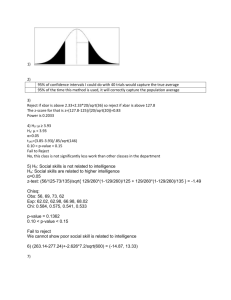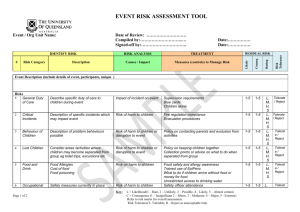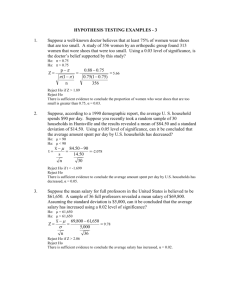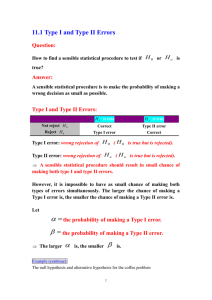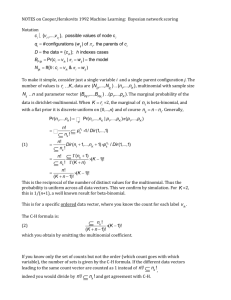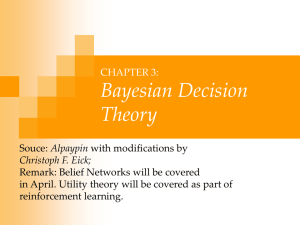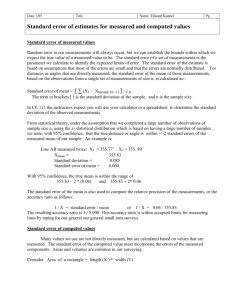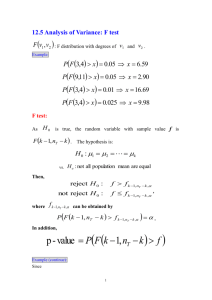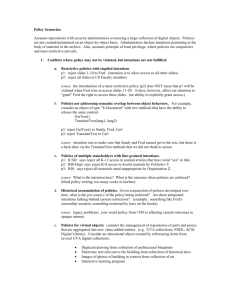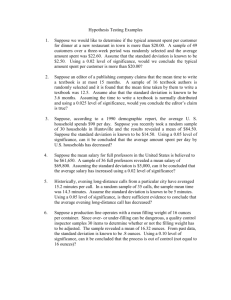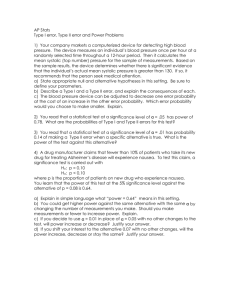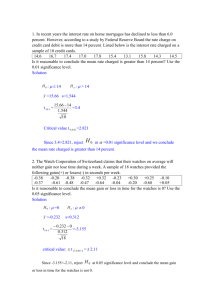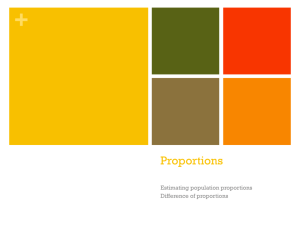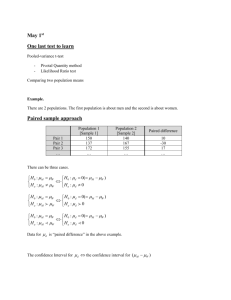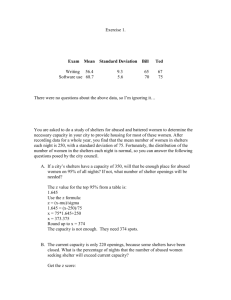Session 6: Statistical Inference, Testing, Estimation and Confidence
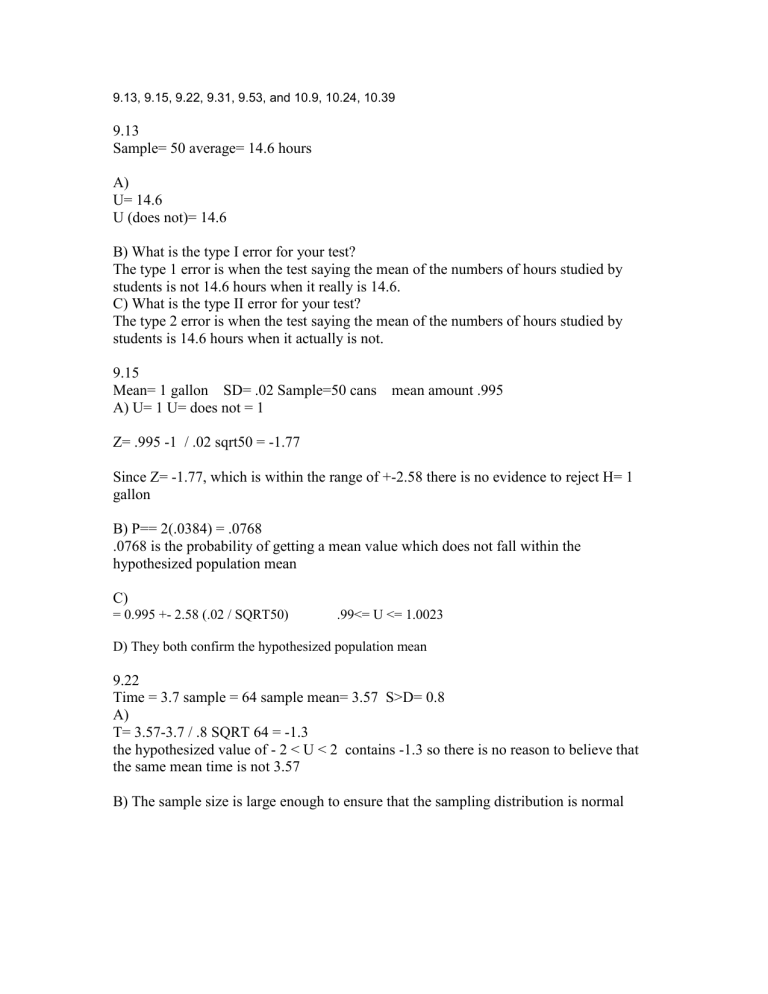
9.13, 9.15, 9.22, 9.31, 9.53, and 10.9, 10.24, 10.39
9.13
Sample= 50 average= 14.6 hours
A)
U= 14.6
U (does not)= 14.6
B) What is the type I error for your test?
The type 1 error is when the test saying the mean of the numbers of hours studied by students is not 14.6 hours when it really is 14.6.
C) What is the type II error for your test?
The type 2 error is when the test saying the mean of the numbers of hours studied by students is 14.6 hours when it actually is not.
9.15
Mean= 1 gallon SD= .02 Sample=50 cans mean amount .995
A) U= 1 U= does not = 1
Z= .995 -1 / .02 sqrt50 = -1.77
Since Z= -1.77, which is within the range of +-2.58 there is no evidence to reject H= 1 gallon
B) P== 2(.0384) = .0768
.0768 is the probability of getting a mean value which does not fall within the hypothesized population mean
C)
= 0.995 +- 2.58 (.02 / SQRT50) .99<= U <= 1.0023
D) They both confirm the hypothesized population mean
9.22
Time = 3.7 sample = 64 sample mean= 3.57 S>D= 0.8
A)
T= 3.57-3.7 / .8 SQRT 64 = -1.3 the hypothesized value of - 2 < U < 2 contains -1.3 so there is no reason to believe that the same mean time is not 3.57
B) The sample size is large enough to ensure that the sampling distribution is normal
9.31
+- 0.05 sample= 100
A)
T= -00023/(.0017/sqrt 100) = -1.36
Since T is less than 1.98 you do not have enough evidence to reject the mean difference is
0.0 inches
B) X= -00023 +- 1.9842
-.000567 <= U <= .000107
One can be 95% certain that mean difference is between -.000567 and .000107
C) You arrive at the same conclusion in both A and B: do not reject
D) In order for the t test to be valid, the data are to be independently drawn from a population that is normally distributed. Since the sample size is
100, which is considered quite large, the t distribution will provide a good approximation to the sampling distribution of the mean as long as the population distribution is not very skewed.
9.53
46% employed n=60 29 were employed
A) Alpha= .05
95% -1.96<=U<=1.6
U= 29
U not= 29
(.483 - .46)/ SQRT (.46)(.54)/60 = .36
P is greater then level of significance so we cannot reject
B)
.6 - .46 / .064
=2.19
(1- .099) (2)
P level is less than level of significance so we can reject
10.9
A)
(2.214- 2.012) / SQRT 3.27 (.05) (.05)
T=.35
Does not fall in rejection region so you can not reject null hypothesis
B)
P= 1- .63 * 2
P= .73
P is greater than the level of significance: do not reject
C) You must assume that the populations are evenly distributed
D)
(2.214- 2.012) +- 2.024 / SQRT 3.27(.5).5
-.96 <= U <= 1.36
One can be 95% confident that the mean time is between -.96 and 1.36
10.24
A) Since T= 1.831 is less than the critical value there is not enough info to reject
B) P= .058
The chance of getting a deviation from 1.83 is 5.8%
C)
=86.1429+- 2.447 (123.7 / SQRT 7) -28.7 <= U <= 200.6
Your 95% percent confident interval shows you that there is a 95% chance of the mean difference falling between -28.7 and 200.6
D) You have to assume that the scores are randomly and independently selected
10.39
133.7 / 161.9 = .826
F stat= .826




